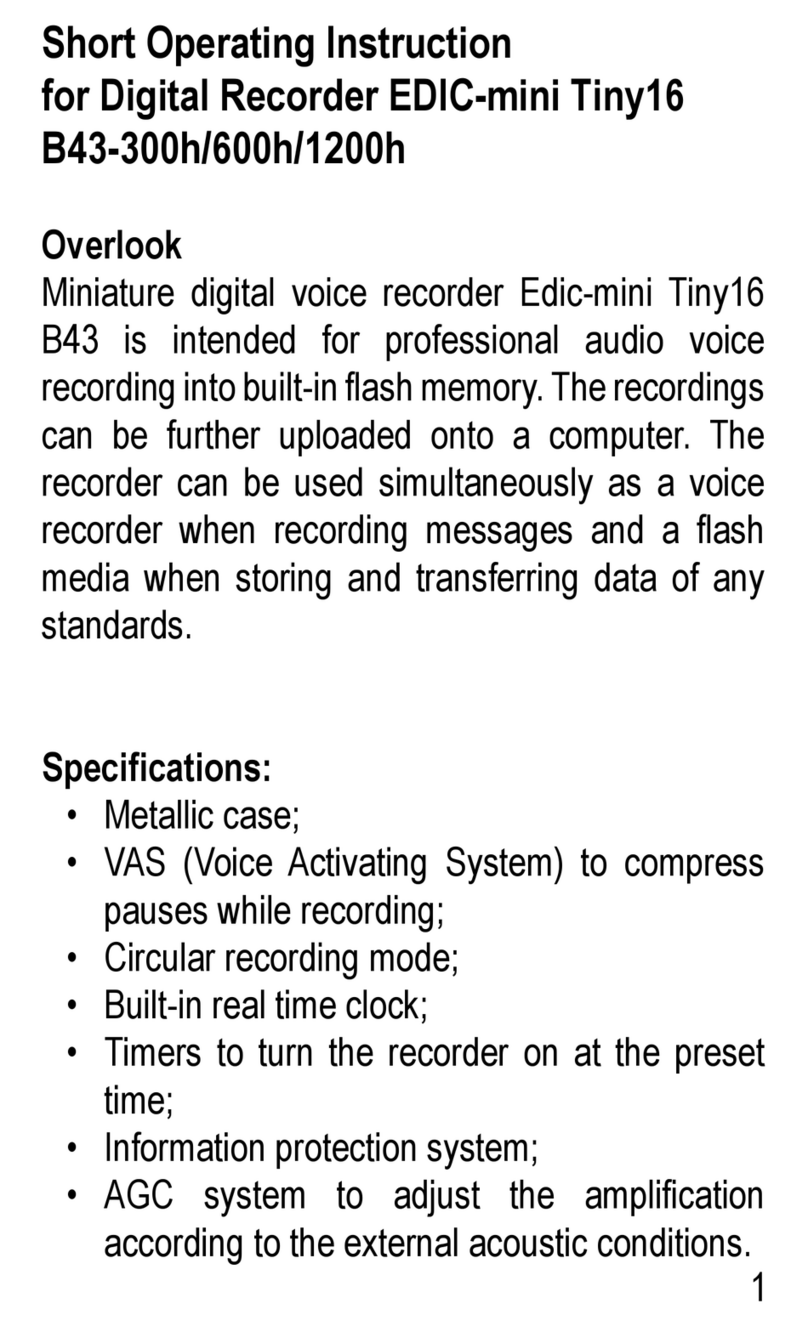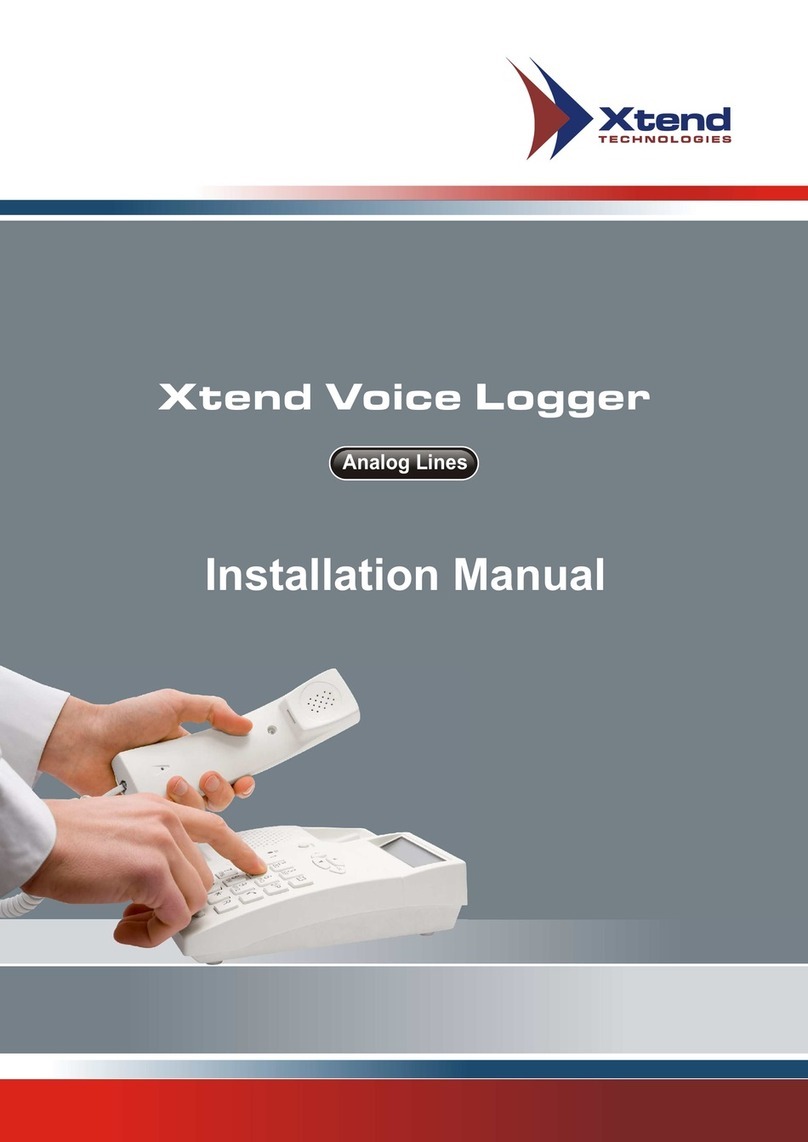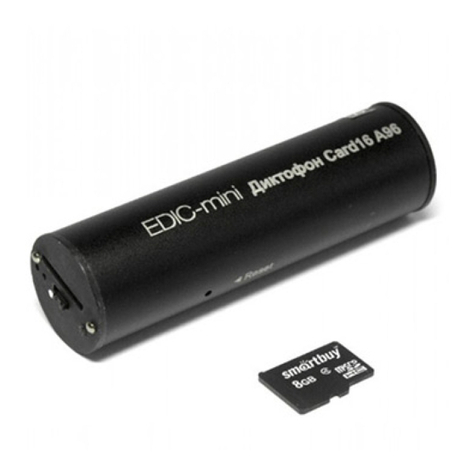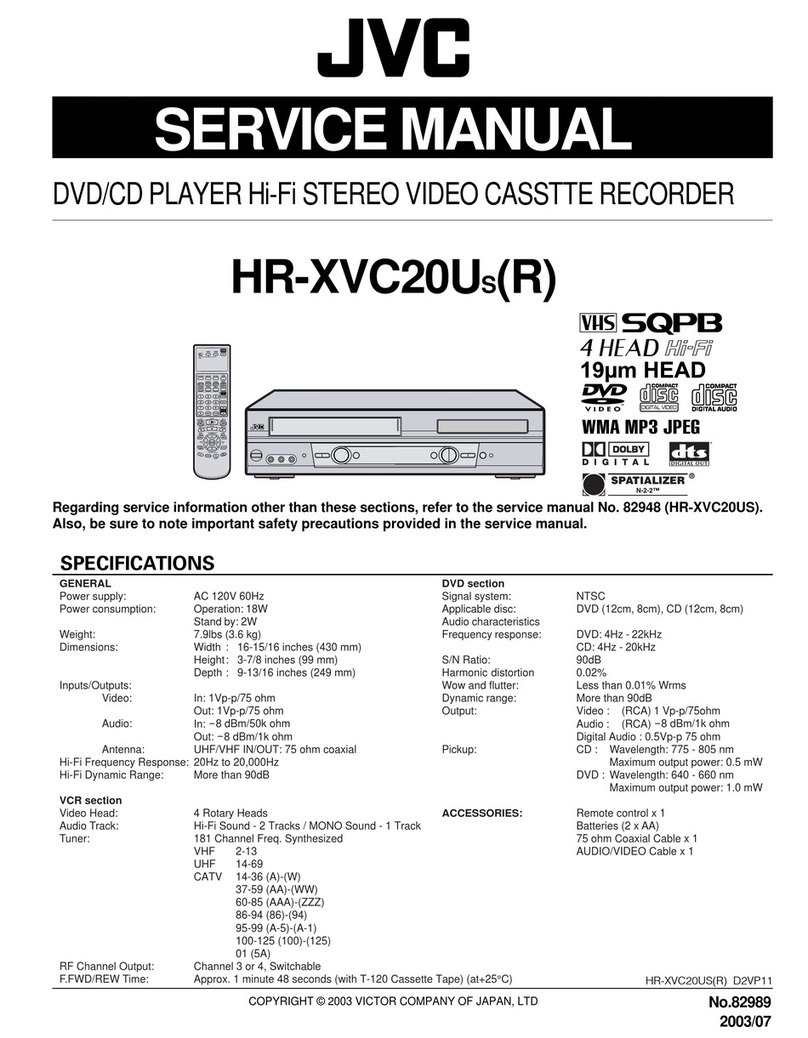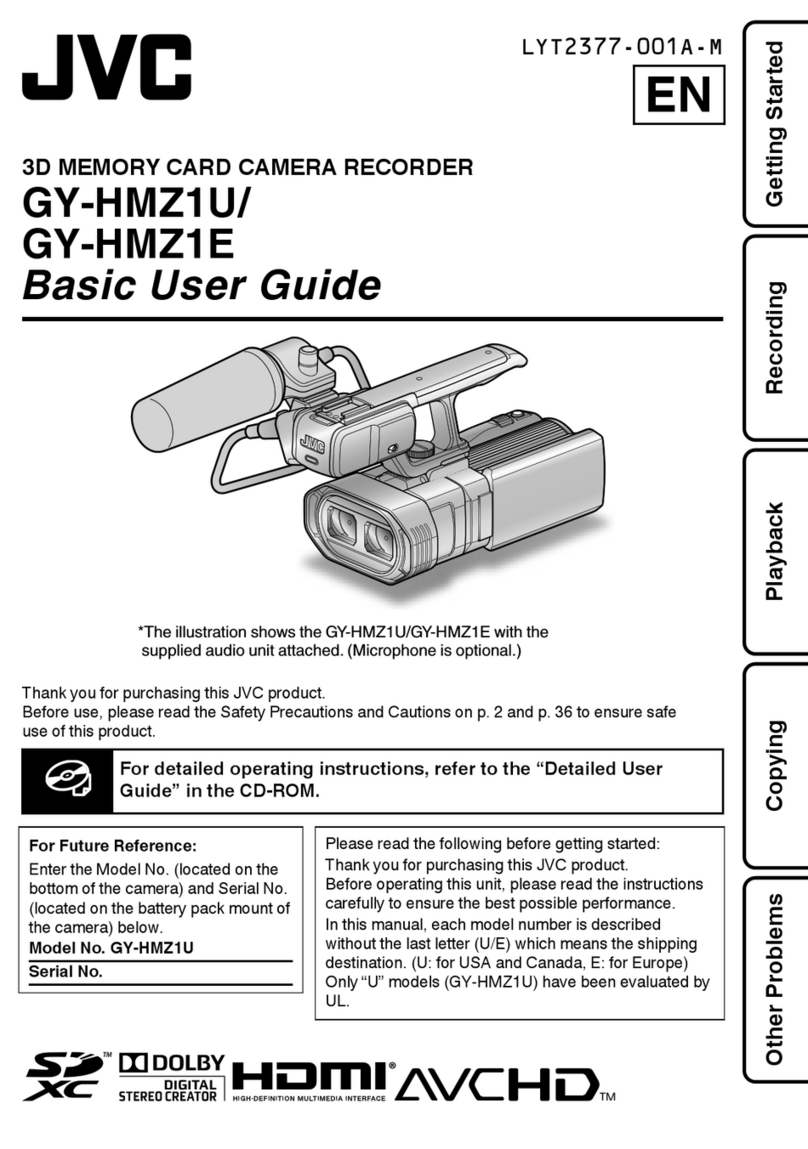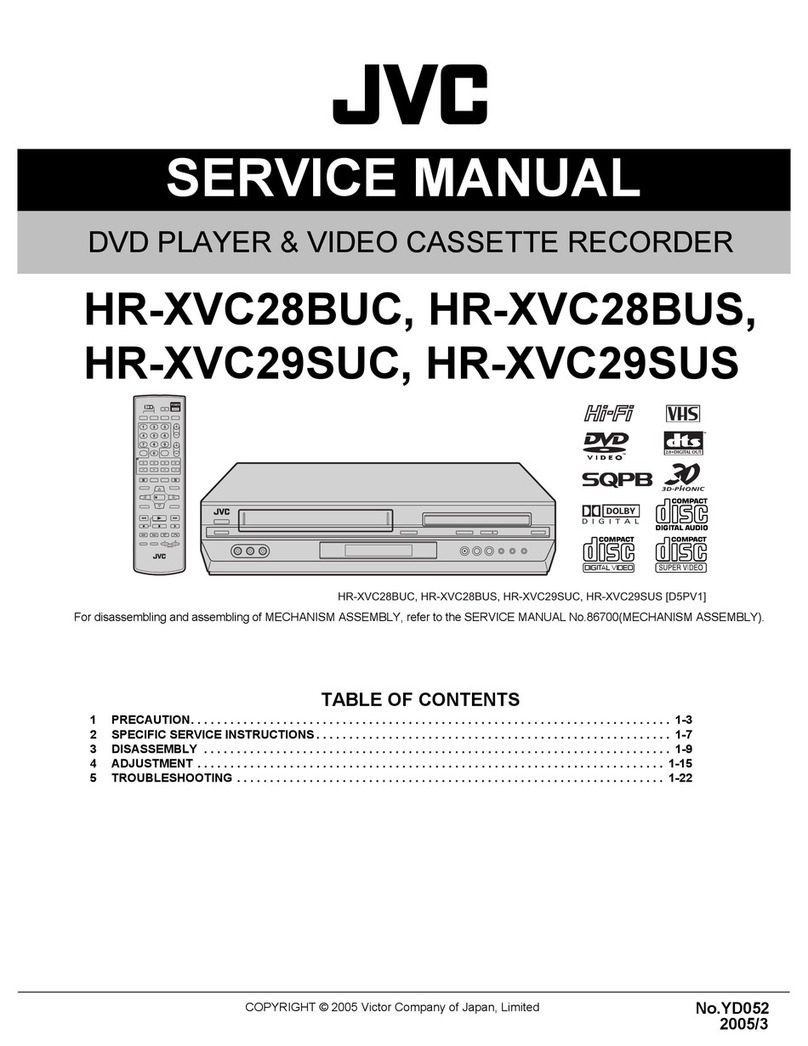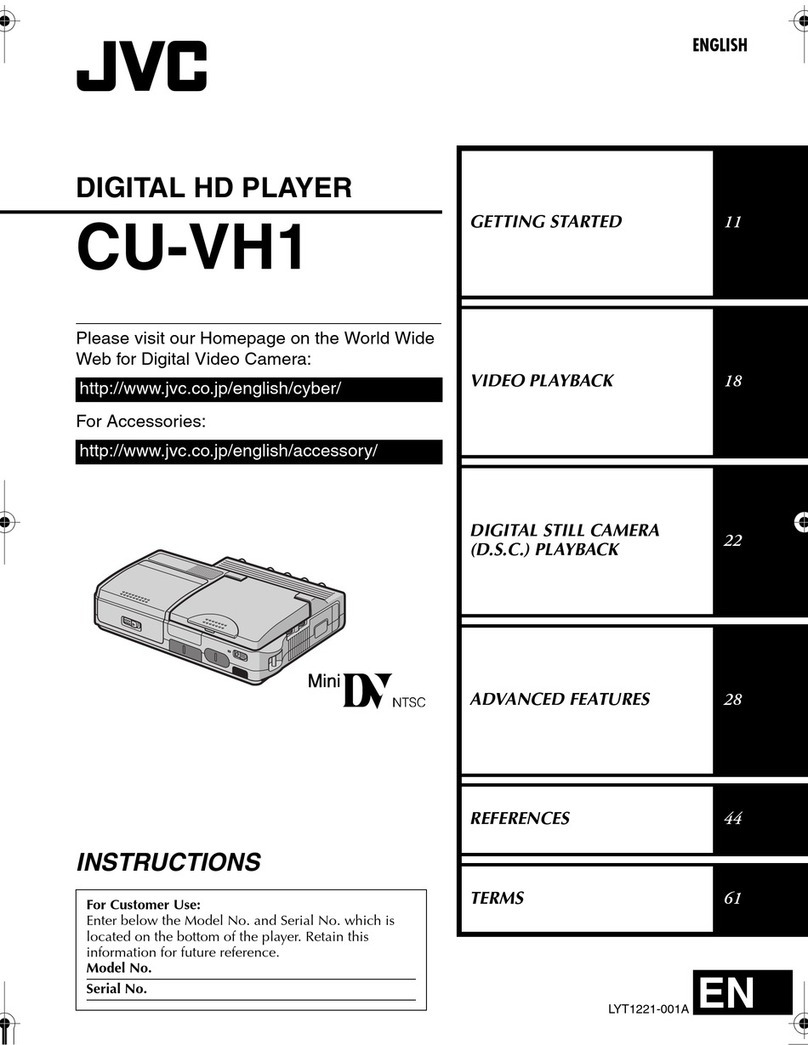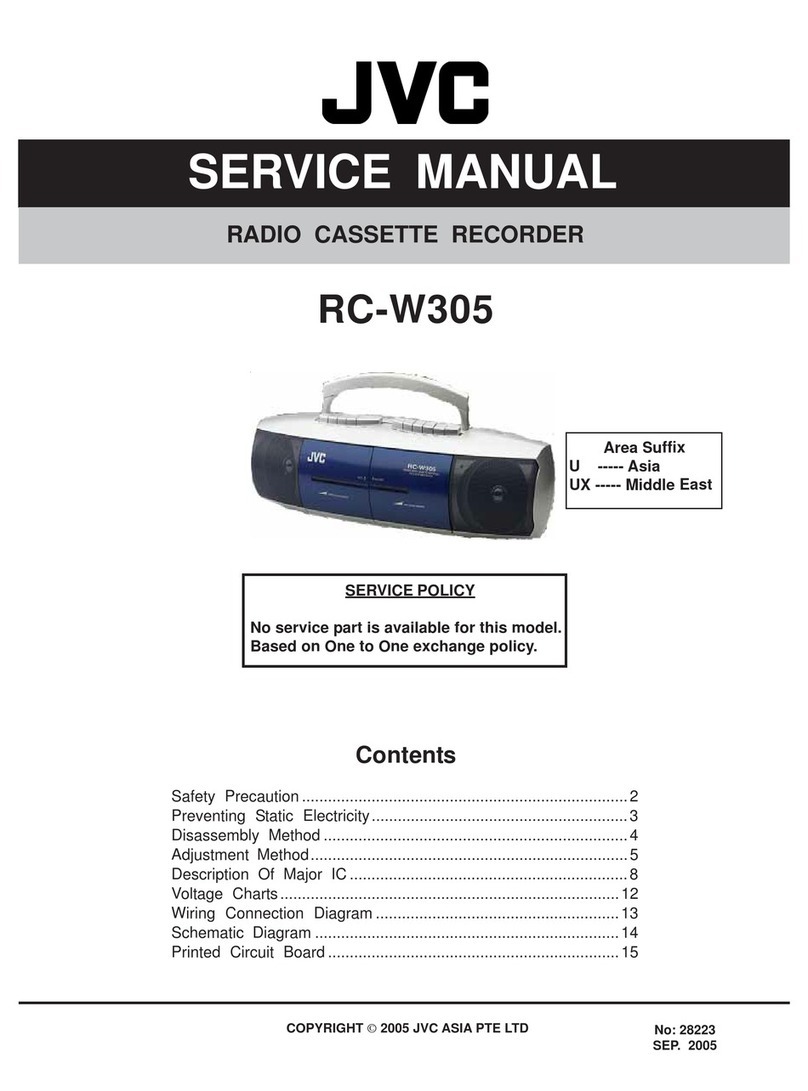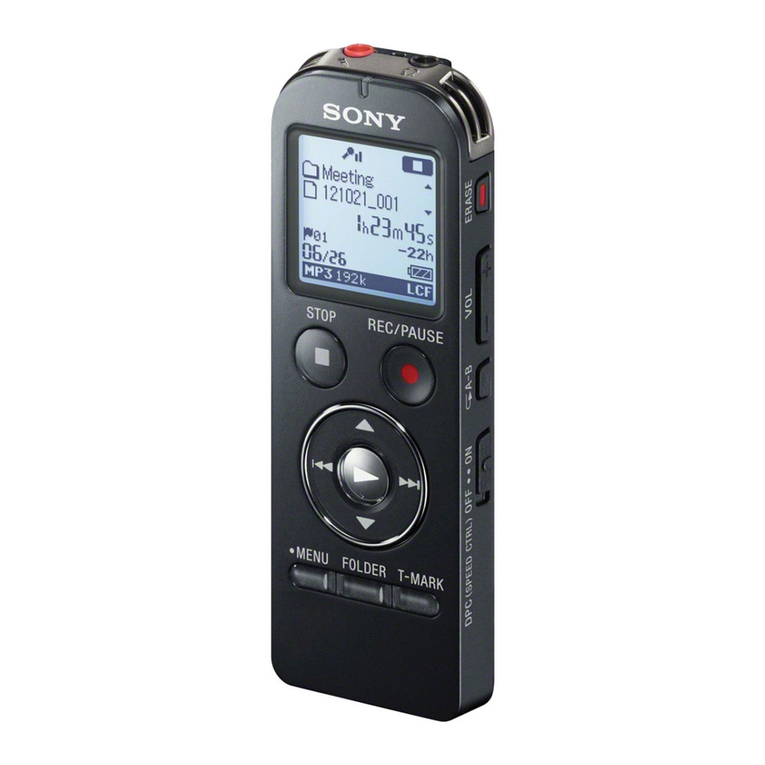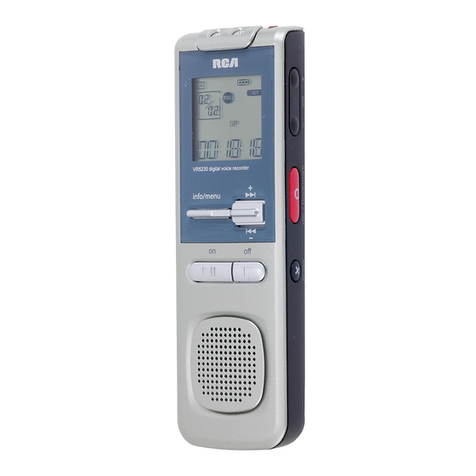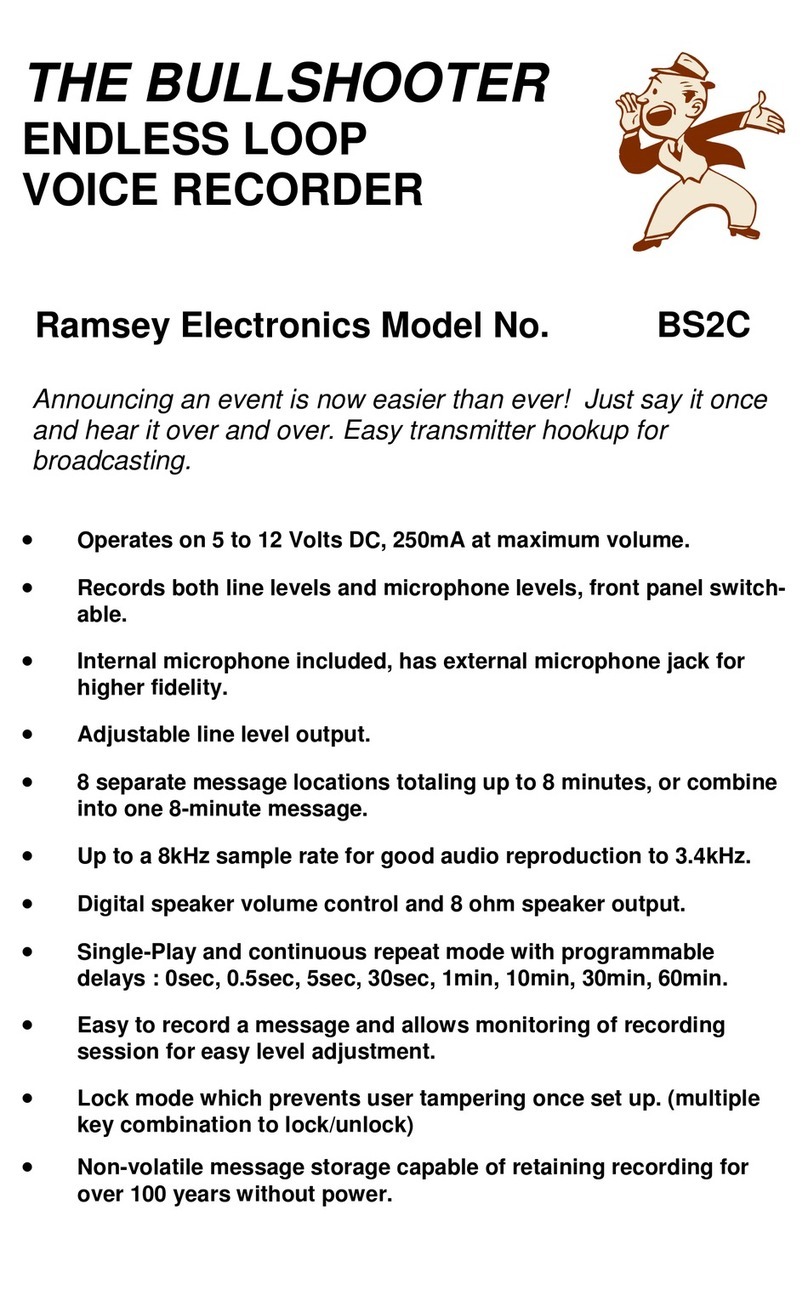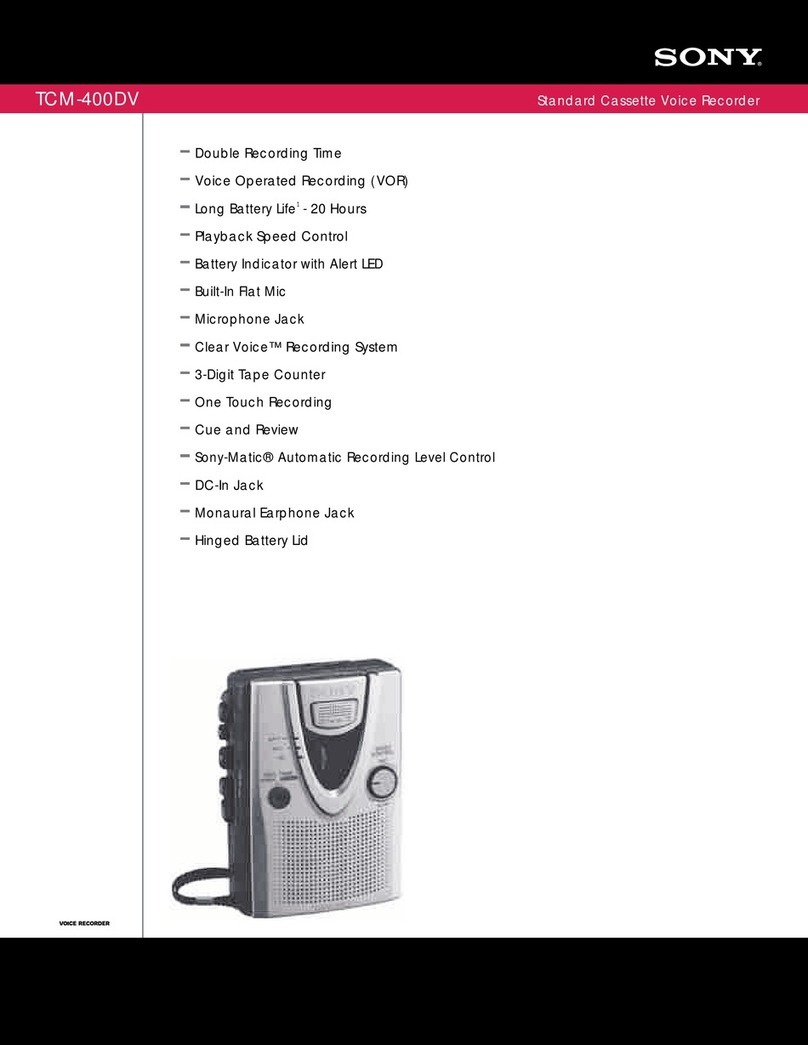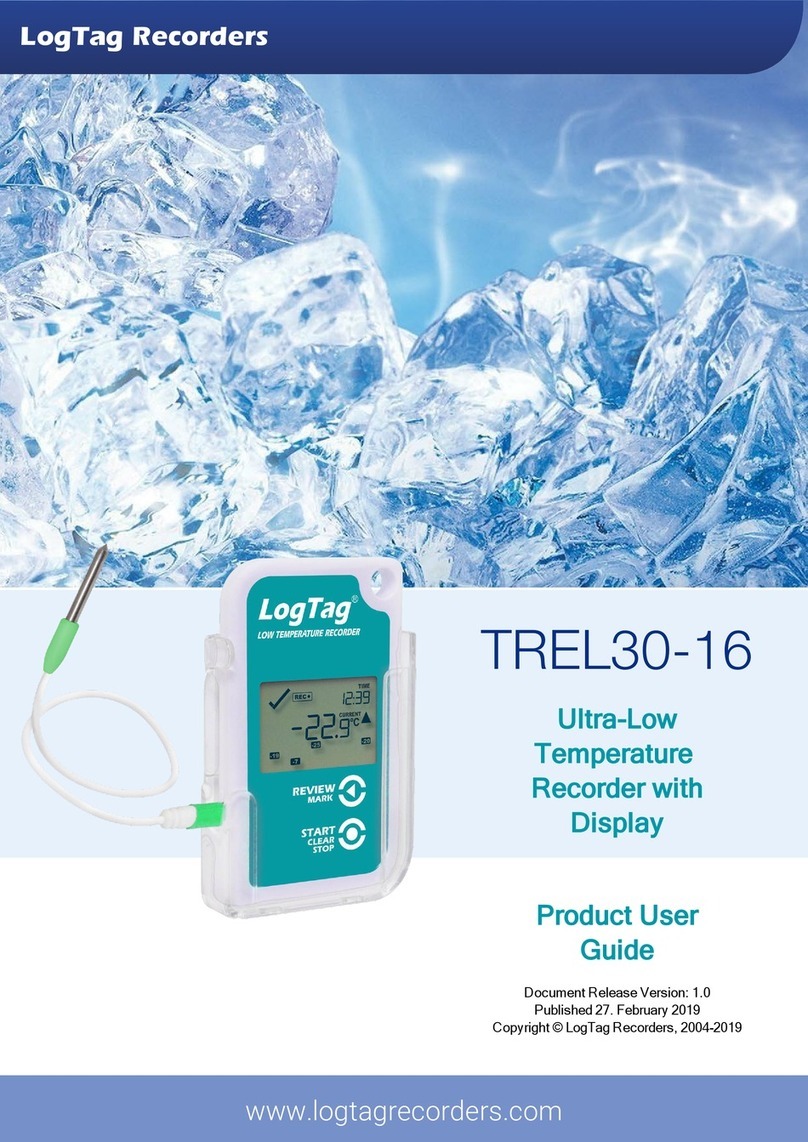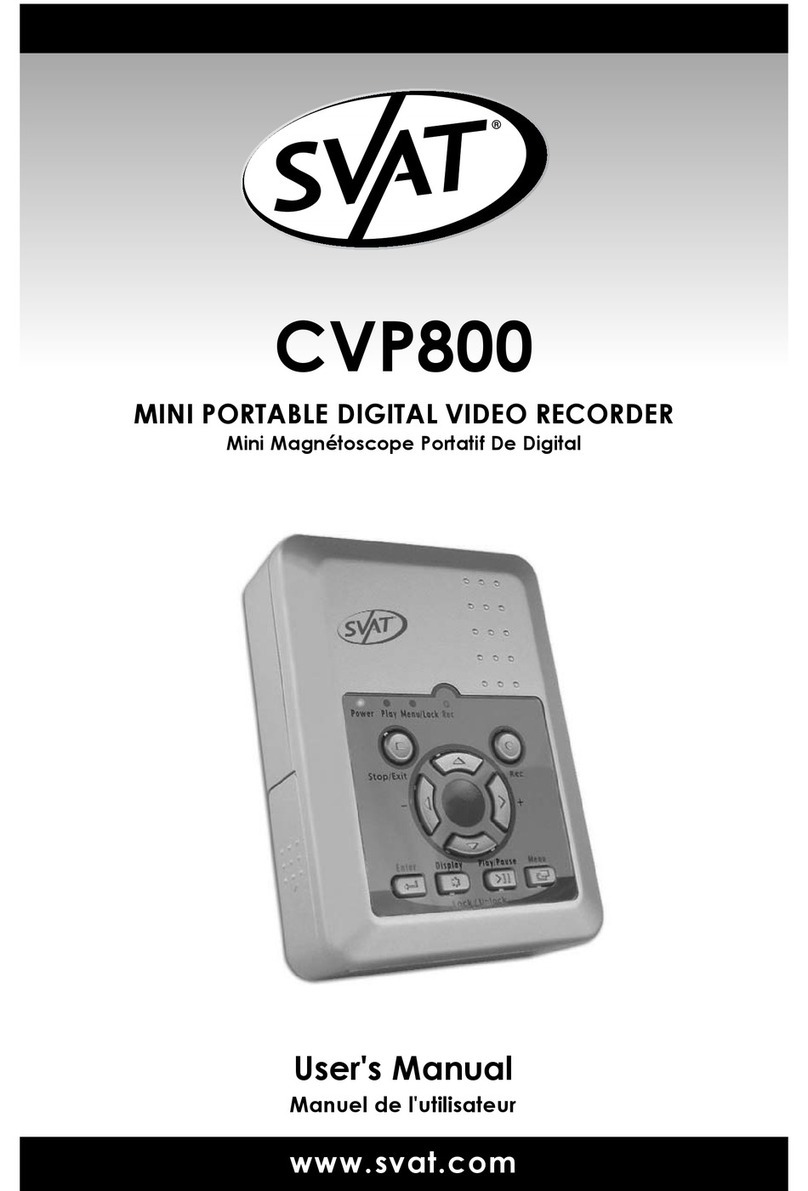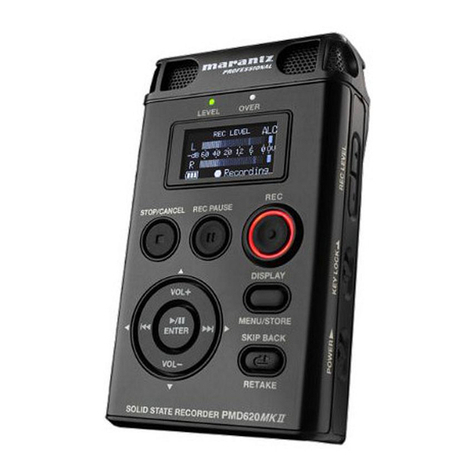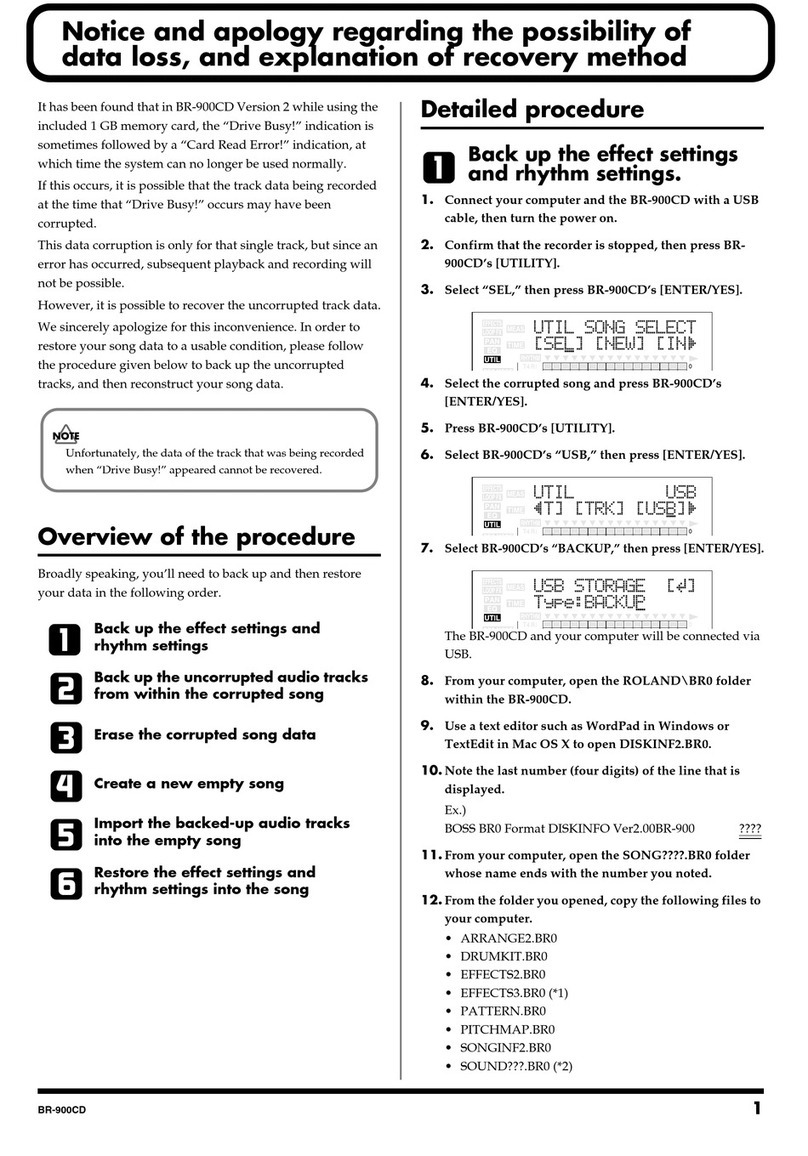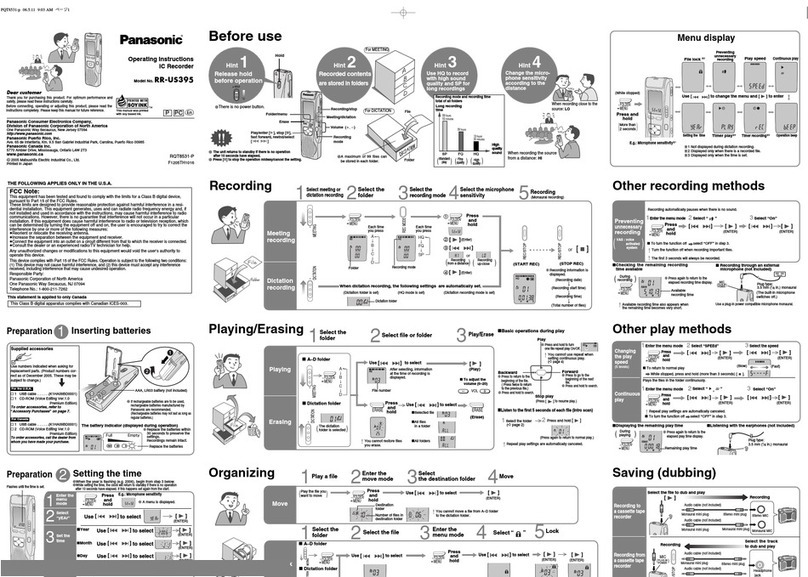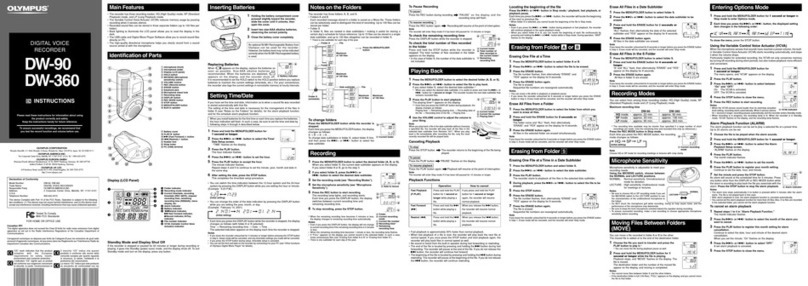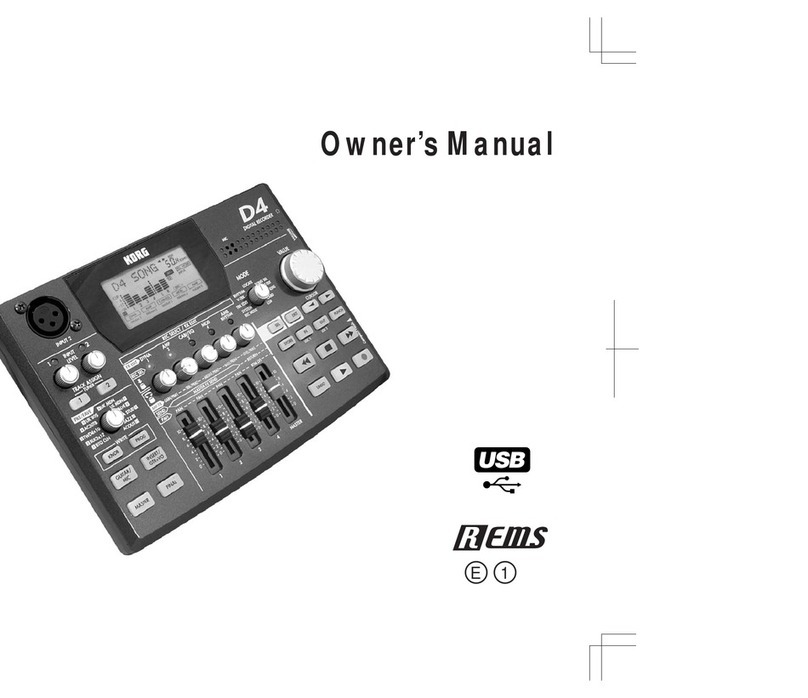
Important Safety Precautions
INSTRUCTIONS
1. DISASSEMBLY
1.1 Disassembly flow chart ................................................................ 1-1
1.2 How to read the disassembly and assembly ................................ 1-1
1.3 Disassembly/assembly method .................................................... 1-1
1.4 Service position ............................................................................ 1-5
1.4.1 How to set the “Service position” ........................................... 1-5
1.4.2 Precautions for cassette loading in the “Service position” ..... 1-5
1.4.3
Cassette loading and ejection methods in the “Service position”
1-5
1.5 Mechanism service mode ............................................................ 1-6
1.5.1 How to set the “Mechanism service mode” ............................ 1-6
1.6 Jig RCU mode ............................................................................. 1-6
1.6.1 Setting the Jig RCU mode ..................................................... 1-6
1.6.2 Setting the User RCU mode .................................................. 1-6
1.7 Opening on the chassis ................................................................ 1-6
1.8 Emergency display function ......................................................... 1-7
1.8.1 Displaying the EMG information ............................................. 1-7
1.8.2 Clearing the EMG history ....................................................... 1-7
1.8.3 EMG content description ........................................................ 1-8
1.8.4 EMG detail information <1> ................................................... 1-9
1.8.5 EMG detail information <2> ................................................. 1-10
2. MECHANISM ADJUSTMENT
2.1 Before starting repair and adjustment ......................................... 2-1
2.1.1 Precautions ............................................................................ 2-1
2.1.2 Checking for proper mechanical operations ........................... 2-1
2.1.3 Manually removing the cassette tape ..................................... 2-1
2.1.4 Jigs and tools required for adjustment ................................... 2-2
2.1.5 Maintenance and inspection .................................................. 2-3
2.2 Replacement of major parts ......................................................... 2-6
2.2.1 Before starting disassembling (Phase matching between
mechanical parts) ................................................................... 2-6
2.2.2 How to set the “Mechanism assembling mode” ..................... 2-6
2.2.3 Cassette holder assembly ...................................................... 2-6
2.2.4 Pinch roller arm assembly ...................................................... 2-8
2.2.5 Guide arm assembly and press lever assembly ..................... 2-8
2.2.6 A/C head ................................................................................ 2-8
2.2.7 Loading motor ........................................................................ 2-8
2.2.8 Capstan motor ....................................................................... 2-9
2.2.9 Pole base assembly (supply or take-up side) ......................... 2-9
2.2.10 Rotary encoder .................................................................. 2-10
2.2.11 Clutch unit .......................................................................... 2-10
2.2.12
Change lever assembly, direct gear, clutch gear and coupling gear ..
2-10
2.2.13 Link lever ............................................................................ 2-11
2.2.14 Cassette gear, control cam and worm gear ....................... 2-11
2.2.15 Control plate ....................................................................... 2-11
2.2.16 Loading arm gear (supply or take-up side) and
loading arm gear shaft ....................................................... 2-12
2.2.17 Take-up lever, take-up head and control plate guide .......... 2-13
2.2.18 Capstan brake assembly .................................................... 2-13
2.2.19 Sub brake assembly (take-up side) .................................... 2-13
2.2.20
Main brake assembly (take-up side), reel disk (take-up side) and
main brake assembly (supply side) ................................................
2-13
2.2.21 Tension brake assembly, reel disk (supply side) and
tension arm assembly ........................................................ 2-14
2.2.22 Idler lever, idler arm assembly ........................................... 2-14
2.2.23 Stator assembly .................................................................. 2-14
2.2.24 Rotor assembly .................................................................. 2-14
2.2.25 Upper drum assembly ........................................................ 2-15
2.3 Compatibility adjustment ............................................................ 2-16
2.3.1 FM waveform linearity .......................................................... 2-16
2.3.2 Height and tilt of the A/C head ............................................. 2-17
2.3.3 A/C head phase (X-value) .................................................... 2-17
2.3.4 Standard tracking preset ...................................................... 2-18
2.3.5 Tension pole position ............................................................ 2-18
3. ELECTRICAL ADJUSTMENT
3.1 Precaution ................................................................................... 3-1
3.1.1 Required test equipments ..................................................... 3-1
3.1.2 Required adjustment tools ..................................................... 3-1
3.1.3 Color (colour) bar signal,Color (colour) bar pattern ............... 3-1
3.1.4 Switch settings and standard precautions ............................. 3-1
3.1.5 EVR Adjustment ..................................................................... 3-1
3.2 Servo circuit ................................................................................. 3-2
3.2.1 Switching point ....................................................................... 3-2
3.2.2 D-VHS switching point ........................................................... 3-2
3.2.3 Slow tracking preset ............................................................... 3-2
TABLE OF CONTENTS
Section Title Page Section Title Page
3.3 Video circuit .................................................................................. 3-3
3.3.1 D/A level ................................................................................. 3-3
3.3.2 EE Y/PB Y (S-VHS/VHS) level ............................................... 3-3
3.3.3 REC color (colour) level ......................................................... 3-3
3.3.4 Video EQ (Frequency response) ............................................ 3-4
3.3.5 Auto picture initial setting ....................................................... 3-4
3.4 Audio circuit .................................................................................. 3-4
3.4.1 Audio REC FM ....................................................................... 3-4
3.5 Demodulator circuit ...................................................................... 3-5
3.5.1 Input level ............................................................................... 3-5
3.5.2 Stereo VCO ............................................................................ 3-5
3.5.3 Stereo filter ............................................................................. 3-5
3.5.4 Separation - 1 ......................................................................... 3-6
3.5.5 Separation - 2 ......................................................................... 3-6
3.5.6 SAP VCO ............................................................................... 3-6
3.6 Digital circuit ................................................................................. 3-6
3.6.1 D-VHS REC level ................................................................... 3-6
3.6.2 PLL f0 ..................................................................................... 3-7
4. CHARTS AND DIAGRAMS
NOTES OF SCHEMATIC DIAGRAM ................................................. 4-1
CIRCUIT BOARD NOTES .................................................................. 4-2
4.1 BOARD INTERCONNECTIONS .................................................. 4-3
4.2
REGULATOR AND SUB REGULATOR SCHEMATIC DIAGRAMS ......
4-5
4.3 MAIN (VIDEO/AUDIO) SCHEMATIC DIAGRAM .......................... 4-7
4.4 MAIN (SYSCON) SCHEMATIC DIAGRAM .................................. 4-9
4.5 MAIN (TUNER/DEMOD) SCHEMATIC DIAGRAM ..................... 4-11
4.6 MAIN (AUDIO I/O) SCHEMATIC DIAGRAM .............................. 4-13
4.7 MAIN (SYNCDET) SCHEMATIC DIAGRAM .............................. 4-15
4.8 MAIN (MAIN-TERMINAL) SCHEMATIC DIAGRAM ................... 4-17
4.9 3D DIGITAL/4M SCHEMATIC DIAGRAM ................................... 4-19
4.10 TERMINAL-NTSC SCHEMATIC DIAGRAM............................. 4-21
4.11 S-SUB SCHEMATIC DIAGRAM ............................................... 4-23
4.12 DISPLAY, REC SAFETY/D.CASS SW AND
JACK SCHEMATIC DIAGRAMS .............................................. 4-25
4.13 D-PRE/REC SCHEMATIC DIAGRAM ...................................... 4-27
4.14 DIGITAL(HOST) SCHEMATIC DIAGRAM ................................ 4-29
4.15 DIGITAL(DMAIN) SCHEMATIC DIAGRAM .............................. 4-31
4.16 DIGITAL(D-VHS IF) SCHEMATIC DIAGRAM .......................... 4-33
4.17 DIGITAL(DVX) SCHEMATIC DIAGRAM ................................... 4-35
4.18 DIGITAL(VIDEO IF) SCHEMATIC DIAGRAM .......................... 4-37
4.19 DIGITAL(HD DEC) SCHEMATIC DIAGRAM ............................ 4-39
4.20 DIGITAL(LAPRAS) SCHEMATIC DIAGRAM ............................ 4-41
4.21 DIGITAL(DSP) SCHEMATIC DIAGRAM .................................. 4-43
4.22 DIGITAL(AUDIO AD/DA) SCHEMATIC DIAGRAM ................... 4-45
4.23 DIGITAL(DECRIPTER) SCHEMATIC DIAGRAM ..................... 4-47
4.24 REGULATOR AND SUB REGULATOR CIRCUIT BOARDS .... 4-49
4.25 3D DIGITAL/4M AND S-SUB CIRCUIT BOARDS .................... 4-51
4.26 TERMINAL CIRCUIT BOARD .................................................. 4-52
4.27 DISPLAY, REC SAFETY AND JACK CIRCUIT BOARDS ........ 4-53
4.28 D-PRE/REC CIRCUIT BOARD ................................................ 4-55
4.29 DIGITAL CIRCUIT BOARD ...................................................... 4-57
4.30 MAIN CIRCUIT BOARD ........................................................... 4-61
4.31 VOLTAGE CHARTS .................................................................. 4-64
4.32 FDP GRID ASSIGNMENT AND ANODE CONNECTION ........ 4-65
4.33 REMOTE CONTROLLER SCHEMATIC DIAGRAM ................. 3-66
4.34 WAVEFORMS .......................................................................... 4-67
4.35 CPU PIN FUNCTION ............................................................... 4-68
4.36 SYSTEM CONTROL BLOCK DIAGRAM ................................. 4-69
4.37 AUDIO BLOCK DIAGRAM ....................................................... 4-71
4.38 VIDEO BLOCK DIAGRAM ....................................................... 4-73
4.39 D-VHS BLOCK DIAGRAM ....................................................... 4-77
5. PARTS LIST
5.1 PACKING AND ACCESSORY ASSEMBLY <M1> ....................... 5-1
5.2 FINAL ASSEMBLY <M2> ............................................................ 5-2
5.3 MECHANISM ASSEMBLY <M4> ................................................ 5-4
5.4 ELECTRICAL PARTS LIST .......................................................... 5-6
SW.REG BOARD ASSEMBLY <01> ................................................ 5-6
SUB REG BOARD ASSEMBLY <02> .............................................. 5-7
MAIN BOARD ASSEMBLY <03> ..................................................... 5-8
3D DIGITAL/4M BOARD ASSEMBLY <05> ................................... 5-14
TERMINAL BOARD ASSEMBLY <06> .......................................... 5-16
A/C HEAD BOARD ASSEMBLY <12> ........................................... 5-16
S-SUB BOARD ASSEMBLY <15> ................................................. 5-16
DISPLAY BOARD ASSEMBLY <28> .............................................. 5-17
REC SAFETY BOARD ASSEMBLY <32> ...................................... 5-18
JACK BOARD ASSEMBLY <36> ................................................... 5-18
D-PRE/REC BOARD ASSEMBLY <43> ......................................... 5-18
DIGITAL BOARD ASSEMBLY <50> ............................................... 5-22
LOADING MOTOR BOARD ASSEMBLY <55> .............................. 5-32
